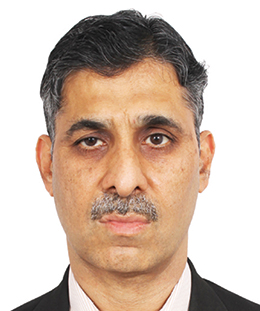

CIO
SAL Hospital & Medical Institute, Ahmedabad
Transforming Medical Infrastructure

IT has kept pace with the development of the medical infrastructure in the past two decades. It has changed the way medicine is practised, preached (taught), and promulgated. Considerable amount of datasets on various medical conditions are now readily available, and these data come from all over the world. Furthermore, expensive medical books, slides and other materials are now available over the Internet for student references. Details on various conditions, hitherto knowledge-limited to only a small group of people, are made comprehensible to lay people thus empowering the common man. CT and MRI scan technologies have advanced the knowledge of the internals of the human body to the extent that the understanding of various parts of body and in particular that of the brain is now well-advanced. As a result, both static and dynamic workings of anybody part and their effectiveness can be understood which can improve early diagnosis of diseases and possible cure and or intervention. IT is delivering the greatest benefits in the fields of general practice through extended medical awareness-seeding in the common person. Patients are well-informed about the diseases they have than themselves. Other significant benefits to medicine from IT are in the areas of drug delivery mechanisms particularly for cancer and other debilitating diseases. With the advent of nanotechnology, (medical) nanobots can deliver the precise amount of drug at the right place and at the right time.
Way Forward
IT driven hospitals would be able to offer excellent and seamless services. The overall patient or patient relatives and the hospital staff would be seamless and uniform across the hospital. Newer priorities for public spend of budgetary amounts need to include investments in medical information technologies and related service providers.

IT Investments
Automation of various activities such as indenting of medicines by wards from pharmacy, bidirectional interfacing of all equipment with the HIS, messaging to consultants or staff from the HIS for critical information, viewing ICU patient monitoring from anywhere across the intranet or internet, EMR, mobile apps that allow authorised users to login into the hospital IT infrastructure from anywhere in the world through the internet. A stepwise automation of manual activities into the HIS / PACS/ EMR is required to scale up the healthcare delivery. Also, the availability of specific technology at reasonable prices drives innovation of new tools that can be useful for hospitals. SAL Hospital has incorporated Integrated HIS, PACS, video conferencing to consult remote patients and EMR for better patient care.
Shift in Perception
Yes. Indias greatest advantages are its English-speaking population, highlytrained IT workforce and medical professionals, and excellent hospital system at well-below Western costs. Technology further reduces the overall costs of not only of diagnostics and treatment but also makes recovery faster, thereby leading to reduced loss of productivity. What is therefore needed is extensive integrated IT and medical infrastructure that could reduce the digital divide among the population thereby creating awareness in healthcare. Indias human resources in IT and healthcare should be able to take care of the rest of the worlds healthcare thereby becoming the Medical Epicentre of the world.
Be a part of Elets Collaborative Initiatives. Join Us for Upcoming Events and explore business opportunities. Like us on Facebook , connect with us on LinkedIn and follow us on Twitter , Instagram.












